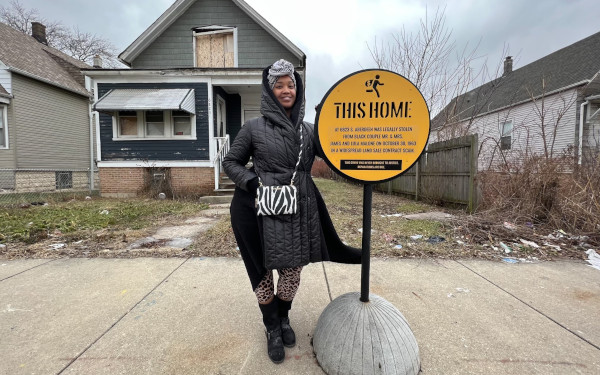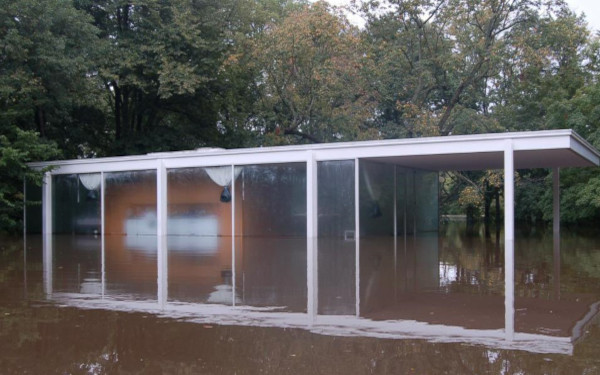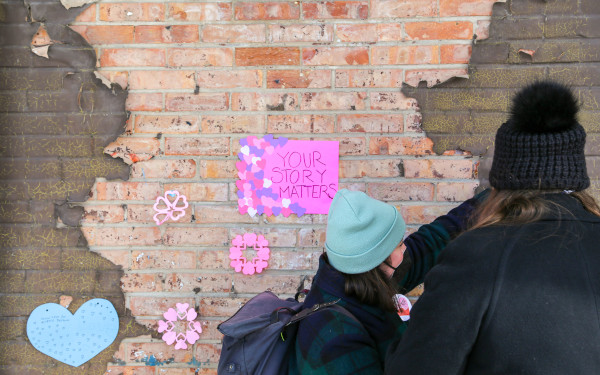
Making preservation tools more accessible, just and responsive is imperative for the field’s relevant future. Read more in The Relevancy Guidebook about Tonika Lewis Johnson’s place-based justice project, Inequity for Sale. Photo provided by Tonika Lewis Johnson.

One of preservation’s greatest opportunities to be relevant to more people is increasing the supply of affordable housing, such as the Iberville Offsite Rehabs I & II in New Orleans. Photo by NewUrbanism, CC by 2.0.

Climate change threatens the future of more than 1 billion people on Earth, as well as the places that matter to them. Preservation practice must adapt to respond effectively to this existential threat. Photo by Landmarks Illinois of the 2008 flooding at the Edith Farnsworth House in Plano, Illinois.

Historic places have layers of stories to tell, but we must be their storytellers. Our practices need to adapt to preserve layered histories, to seek permission from those whose stories we are telling and to ensure the way that we share information is accessible. Photo by Lewis Purdy for Landmarks Illinois.
In November 2023, Landmarks Illinois published “The Relevancy Guidebook: How We Can Transform the Future of Preservation,” written by Landmarks Illinois President and CEO Bonnie McDonald as an outcome of The Relevancy Project (TRP). Based on interviews with professionals and advocates working in, or adjacent to, historic preservation across the United States, its territories and tribal nations, the guidebook identifies the field’s current challenges; presents ways to make it more just, equitable, inclusive and accessible; and provides actionable solutions to enhance its relevance in a changing world.
“The Relevancy Guidebook” (TRG) is a compilation of interviews, research findings and an extensive array of resources to create a comprehensive, user-friendly reference manual. It is designed to inspire, inform and guide those who hope to make historic preservation relevant and beneficial to anyone who wants to save the places that matters to them and to their community.
People have a fundamental connection to historic places because they give context to the events that have shaped our history, both our achievements and our mistakes. Just as destroying these places can untether communities, saving them can help maintain a vital connection between generations, providing a source of knowledge, recognition, repair, pride and hope.
If historic places are so important, why is preserving them still so difficult? Because not everyone sees history as relevant. The huge gap in the people preservation serves and the need for our goals to align with larger community priorities illustrates the crisis that the field finds itself in. Lack of widespread public value for preservation has led to a cascade of challenges: misinformation, embattled regulatory tools and insufficient funding. Preservation also faces new challenges emerging out of an overdue examination of our practices through the lens of justice, equity, inclusion and accessibility. For preservation to survive and be useful in a changing world, we must reckon with its relevance.
The Relevancy Project (TRP) was conceived to identify preservation’s opportunities, to tap our field’s collective wisdom and to inspire individual and organizational-level actions that will move preservation towards relevance. Between August 2019 and February 2021, 130 people both inside of, and adjacent to, the preservation field were interviewed about common concerns, best practices and innovations. “The Relevancy Guidebook” (TRG) is a compilation of the project interviews, research and resources in an easy-to-reference document to inform and inspire actions to make preservation relevant to more people. Bonnie McDonald received the 2020 James Marston Fitch Charitable Foundation Mid-Career Fellowship, and a Peter H. Brink Leadership Fund grant from the National Trust for Historic Preservation, to complete The Relevancy Project and “The Relevancy Guidebook.”
“The Relevancy Guidebook” lays out key findings on preservation’s opportunities including affordable housing preservation and creation, fighting climate change, just, equitable and accessible practices, health benefits, dismantling “the culture of preciousness”, expanding preservation job opportunities, including through adaptive reuse, better storytelling and values-based fundraising. It also details steps historic preservationists and organizations can take to center communities and underrepresented voices in decision-making and action.
A travel guidebook provides maps to orient you and options on what to do from a source that has vetted the options. A guidebook’s best feature is that there is no set path. You choose your own experience based on your interests, time and mobility. Envisioned as a similar tool, TRG provides ideas, models and resources from the field’s innovators to move preservation practice towards relevance. You choose your own path.